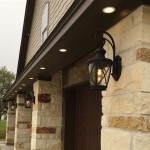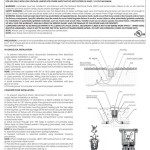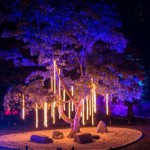DIY Low Voltage Outdoor Lighting: A Comprehensive Guide
Transform your outdoor space into an enchanting haven with DIY low voltage outdoor lighting. This guide delves into the essential aspects of designing, installing, and maintaining your own captivating illumination system.
Benefits of Low Voltage Lighting
Low voltage lighting offers numerous advantages over traditional high voltage systems:
- Safety: Operates at a lower voltage, reducing the risk of electrical shock.
- Energy Efficiency: Consumes less energy, lowering your electricity bills.
- Flexibility: Easy to install and customize, allowing for versatile lighting designs.
- Longevity: LED bulbs commonly used in low voltage systems have extended lifespans.
Choosing Lighting Fixtures
Selecting the right lighting fixtures is crucial for creating the desired ambiance. Consider the following:
- Style: Choose fixtures that complement your outdoor décor.
- Purpose: Determine the intended use of the lighting (e.g., path lighting, accent lighting).
- Bulb Type: LED bulbs are highly efficient and durable.
- IP Rating: Opt for fixtures with appropriate IP ratings for outdoor exposure.
Design Considerations
Plan your lighting layout carefully to enhance the functionality and aesthetics of your outdoor space:
- Path Lighting: Illuminate walkways for safety and convenience.
- Accent Lighting: Highlight architectural features, trees, or sculptures.
- Uplighting: Create dramatic effects by casting light upwards from the ground.
- Moonlighting: Mimic moonlight for a soft, natural atmosphere.
Installation Guide
For a successful installation, follow these steps:
- Plan the Layout: Sketch out the desired lighting design.
- Mark the Locations: Determine the placement of fixtures and wires.
- Dig the Trenches: Dig shallow trenches as needed for wires.
- Install the Wires: Use direct burial cables and connectors designed for low voltage lighting.
- Test the System: Verify the functionality of the lighting before burying the wires.
Maintenance Tips
Regular maintenance ensures optimal performance and longevity of your low voltage lighting system:
- Clean Fixtures: Periodically clean fixtures to prevent dirt buildup.
- Replace Bulbs: Monitor bulb life and replace them as necessary.
- Inspect Wires: Check wires for any damage or corrosion.
- Troubleshoot: If any issues arise, refer to the manufacturer's instructions or seek professional help.
Conclusion
DIY low voltage outdoor lighting empowers you to create a captivating outdoor ambiance that enhances both safety and aesthetics. By selecting the right fixtures, designing a thoughtful layout, installing the system correctly, and maintaining it regularly, you can enjoy the transformative power of outdoor illumination for years to come.

Louie Lighting Blog Low Voltage Landscape Install

Install Landscape Lighting For Added Curb Appeal

Planning Your Low Voltage Outdoor Landscape Lighting 1000bulbs Blog

The Easiest Way To Install Low Voltage Landscape Lighting Abby Organizes

Diy Low Voltage Landscape Lighting Ideas

Phase 1 Of Our Diy Low Voltage Landscape Lighting Project Real Fit Housewife

How To Install Low Voltage Outdoor Landscape Lighting Diy Backyard

Outdoor Low Voltage Lighting Diy Family Handyman

Install Landscape Lighting For Added Curb Appeal

The Easiest Way To Install Low Voltage Landscape Lighting Abby Organizes







